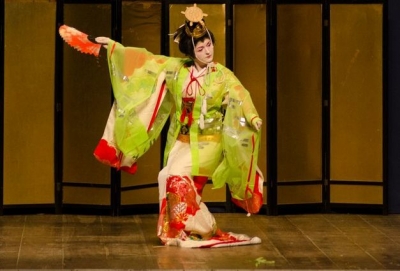
Kabuki, traditional Japanese popular drama with singing and dancing performed in a highly stylized manner. A rich blend of music, dance, mime, and spectacular staging and costuming, it has been a major theatrical form in Japan for four centuries. The term kabuki originally suggested the unorthodox and shocking character of this art form. In modern Japanese, the word is written with three characters: ka, signifying “song”; bu, “dance”; and ki, “skill.”
Traditionally, a constant interplay between the actors and the spectators took place in the Kabuki theatre. The actors frequently interrupted the play to address the crowd, and the latter responded with appropriate praise or clapped their hands according to a prescribed formula. They also could call out the names of their favourite actors in the course of the performance. The plays often present conflicts involving such religious ideas as the transitory nature of the world (from Buddhism), and the importance of duty (from Confucianism), as well as more general moral sentiments. Tragedy occurs when morality conflicts with human passions.
Picture Credit : Google
